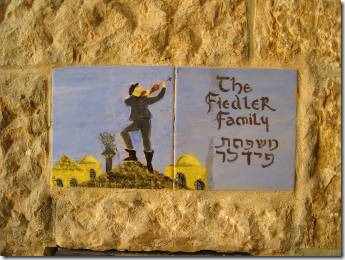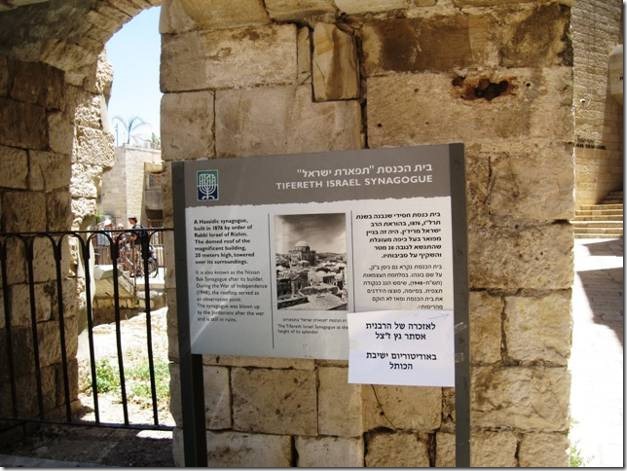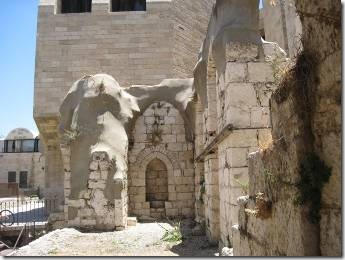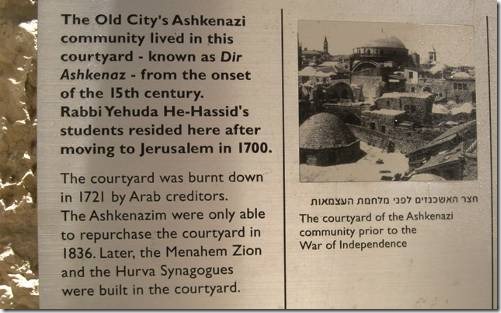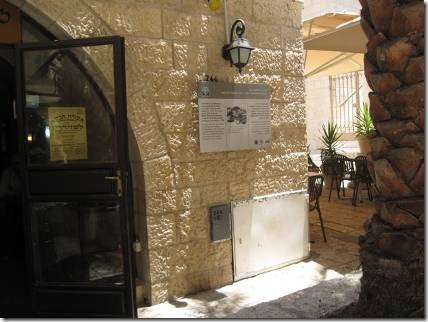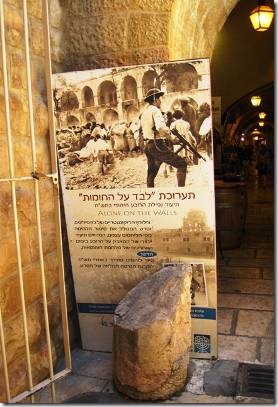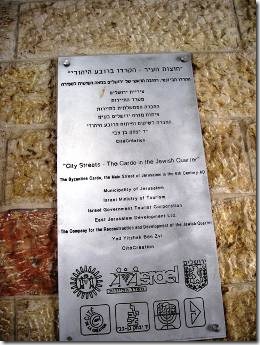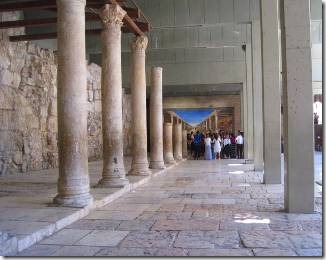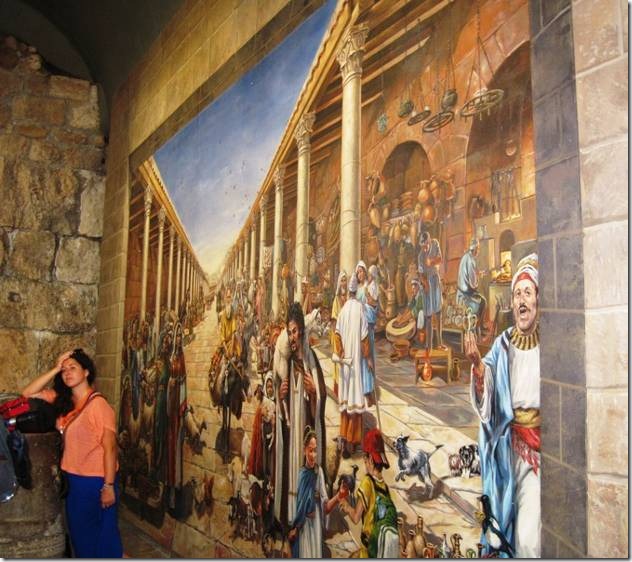Merhaba,
Randal and I were up and out of our pension room by 7:30 am. We left our key with one of the managers as they want to move us to a smaller room. That’s fine, we don’t need 4 beds. We motorbiked the picturesque road along the coast back to the yard where Randal and I both have projects to do. We ate our usual breakfast, as we do have power and water on the boat. Then I was off for my morning walk up the hill behind the boat yard. It really is quite lovely, to me. Others might just think it barren and dull. It was really quite hot so at the top I sat for a bit in the breeze, drank some water and then headed back down. On my way down the hills, a man jogging with no hat, sun glasses or water passed me going up. Crazy person.
My next "event" was laundry which involves working the upperbody, back and arm muscles as well as hands with all that wringing. After that, because the yard wifi is so good, I searched Amazon for cheap books to download to my Kindle which also picked up the wifi. At Netsel Marina the wifi is quite slow or non-existent so we use a 3G dongle. But there is a fee to download books with 3G so I’m loading up here with the wifi…if that makes sense. There is a library at Netsel and I did find a few books there, but most are thrillers that I really don’t read.
I really am enjoying working with the photos from Israel as I’m learning lots that I never knew. I really can’t wait to sit with our friend Gabriel Szego and ask about a zillion questions. It was Gabriel’s cousin Nilly and her husband Eitan who took us on our Golan Heights tour day. Anyway, I do go off on tangents, but then finally have to just stop because if not, I’d never get an email sent.
Ru
Tifereth Israel Synagogue, Alone on the Walls, and The Cardo
Reminders that people actually really live in Old Jerusalem: it’s not just a giant open air museum.
Growing up in New Bedford we belonged to the Tifereth Israel Synagogue. It was small and is still my idea of what a synagogue should look like: dark and not the least bit modern. I can’t remember if we were the last class confirmed in the old Synagogue or the first in the new one, just a few blocks from our home and across from Buttonwood Park. All I remember is Marsha Cohen’s slip starting to hang below her dress. I don’t remember learning anything particularly spiritual either preparing for my Bas Mitzvah or later Confirmation. Not much to show for years of Hebrew and Sunday School. “Education is wasted on the young,” they say. And whoever “they” are they’re right. At least in my case. Latin, Maths, geology, chemistry, so much just in one ear, on a test paper, and then gone. Thankfully I always loved to read, grew up, became a librarian and learned how to find answers to my questions. It’s the lost chance to know languages that I’m sorry about. …. The point being….I found a Tifereth Israel Synagogue ruin in Jerusalem I had to take photos and learn about it. Of course that’s just raising more questions about the different sects in Judaism. I grew up Conservative. There was an Orthodox Synagogue, Ahavath Achim whose Rabbi Weinberg started a day camp my sister and I went to and worked at for several summers. I think that’s the only place I really felt religion when the Rabbi would tell a different story Friday afternoons. We sang prayers before and after lunch. We sang the American National Anthem and then Hatikvah, Israel’s Anthem. Not sure if Camp Tikvah still exists. Ahavath Achim Synagogue closed in 2010. There is no reform synagogue. As for the different sects, I really know nothing about them.
The Tifereth Yisrael synagogue is also known as the Nissan Beck synagogue, after its founder. It was called "Nishes Shul” by the Hassidim, which in Yiddish means Nissan’s synagogue. The name Tifereth Yisrael (Splendor of Israel) is in honor of Rabbi Israel Friedman, the Hassidic leader and founder of the Radzine Hassidic dynasty, who initiated the establishment of the synagogue and was the first donor of funds aimed at buying the land upon which it was built.
The first Ashkenazi Hassidim arrived in Israel towards the end of the 18th century, and settled in Tiberias. When the Pharisees returned to Jerusalem, The Hassidim became jealous and moved to Jerusalem as well.
It was Rabbi Friedman’s intention to establish a Hassidic synagogue in Jerusalem, and it was built simultaneously with the Hurva synagogue of the Pharisees. Construction began in 1882, and continued for ten years.
While the construction was ongoing, the Austrian Emperor Franz Josef visited Jerusalem, and asked why the synagogue had no dome. Nissan Beck replied: "The synagogue has taken off its hat to you, your highness." "How much will it cost me to have the synagogue replace its hat?" the emperor asked, and donated a substantial sum for the completion of the dome.
The synagogue was magnificent. It stood at a height of 20 meters, and its domed roof was one of the highest places in the Old City. It served as a community center for many of the Hassidim in the Jewish Quarter, and it had a Mikveh in its basement.
During Israel’s War of Independence, a vital military observation post was established on the synagogue’s roof. For this reason, there was a great deal of hand to hand fighting with the Arab Legion around the synagogue and in the immediate vicinity. Finally, the synagogue was captured and subsequently destroyed by the Arab Legion. The synagogue’s large dome and walls collapsed, covering the synagogue’s foundations.
After the reunification of Jerusalem, the rubble and refuse were cleared, and the lower level and the entrance to the prayer hall, built to resemble the facade of a Galilean synagogue, were revealed. Today the site, with its ancient stones restored, serves as a monument to the synagogue’s magnificence.
http://www.jewish-quarter.org.il/atar-tfr.asp
http://www.jewfaq.org/movement.htm give an explanation of the different “sects” in Judaism.
• Movements are sects or denominations of Judaism
• The oldest movements were Pharisees, Sadducees, Essenes and Zealots
• Medieval movements included Karaites and Rabbinical Judaism
• Rabbinical Judaism split into Chasidic, Orthodox, Reform and Conservative in the US today
• Other countries have similar movements differently named
http://www.jewishvirtuallibrary.org offers a different interpretation proving that we see things from our modern perspectives making one “historical truth” pretty impossible.
Tifereth Israel with its dome then….and the ruins it is now.
Lunch in an ancient courtyard: the plaque on the outer wall of the restaurant.
The Hurva Synagogue has been restored, but the tour was too late in the day for me.
It was about 1:30 when I ate lunch so was pretty tired and hungry. I ordered a “Tunisian” sandwich which is a tuna sandwich with vegetables and a sliced hard cooked egg. It came with lettuce and tomato and cucumber and it was way too much for me. There was a group of 6 Americans eating there also. One young man hadn’t ordered anything. He said he just ate everyone else’s left overs. I almost offered him mine but he’d already had several pieces of pizza and was claiming to be full. As a whole, they didn’t come across as a very appealing group, so I just left my left overs on my plate…and left.
I took this photo outside as none were allowed inside.
It was a small museum. A short film was shown during which those who had been part of the siege were interviewed. The walls were covered with the photos taken by John Philips.
Alone on the Walls (Permanent Exhibit)
The permanent exhibit ‘Alone on the Walls’ was established to perpetuate the memory of the defenders of the Quarter, and of those who lost their lives defending it, during the War of Independence of 1948. Inaugurated in 1990, the exhibition illustrates the siege of Jerusalem and specifically the battles for the Quarter during the last 15 days of warfare. The Quarter was under siege from December 1947 – after the UN resolution for the partition of Palestine, which ended the British Mandate and enabled the creation of the State of Israel – until May 1948. The Jewish Quarter was partially besieged by the Arabs for 150 days, while the British were still in control. During that period many incidents occurred that demanded a heavy price in blood from the Quarter’s residents and defenders alike.
When the British withdrew in 1948, a regiment of the Arab Legion, assisted by a militia of 1500 troops from neighboring Arab countries, attacked the Jewish Quarter. The Quarter at the time was defended by 200 Haganah, Etzel and Lehi soldiers. The defenders fought house to house for 13 consecutive days until their strength, their numbers and their ammunition were depleted. By the 28th of May 1948, the area of the Quarter under their control was reduced to 20 dunams, in which resided 1600 helpless people. The defenders surrendered. 350 residents and defenders were taken into captivity, 1400 were expelled from their homes. 68 residents of the Quarter were killed during the six months of war: 39 defenders and 29 civilians. The exhibit displays a collection of photographs taken by John Philips, a photo-journalist who documented the fall of the Jewish Quarter in 1948. http://www.jewish-quarter.org.il/atar-acharon.asp
About the photo-journalist John Philips.
“John Philips, an American photojournalist, was sent to the Middle East in early 1948 as a correspondent for Life Magazine. On May 19, 1948, Philips joined the Arab Legion in their attack on the Jewish Quarter of the Old City of Jerusalem. Dressed in the Legionnaire’s uniform, he was free to move unhindered throughout the combat zone.
On the 10th day of fighting, Friday, May 28th, Philips’ camera captured the Fall of the Jewish Quarter, hour by hour. .” From the Alone on the Walls brochure
One last stop for this email, The Cardo
The Cardo was Jerusalem’s main street 1500 years ago. The Cardo was originally paved in the 2nd century when Hadrian rebuilt Jerusalem as a Roman polis called Aelia Capitolina. The Cardo was extended south to the area of today’s Jewish Quarter in the 6th century by the Byzantine Emperor Justinian. In its day, The Cardo was an exceptionally wide colonnaded street running through the heart (or cardo) of the city on a north-south axis, connecting many of Byzantine Jerusalem’s major institutions. Parallel rows of columns supported a red ceramic tile roof and an arcade ran along, at least part of its eastern side. http://www.israelinsideout.com
Can you find the pomegranate? (He has his red ball cap on front to back, and a backpack…or so it looks to me. There was a tour group, of which this tired woman was a member, that was blocking the painting so I didn’t get very close. This is a zoomed photo.)
“A section of Cardo has been reactivated as a shopping street, full of arts and various special goods. In part of the preserved Cardo, the French school of art Creation de la Cite installed a large painting of the Byzantine Cardo – look for the depiction of a Byzantine girl handing a pomegranate to a 21st century boy. “ http://www.israelinsideout.com/Things-to-do-in-Jerusalem/the-cardo-the-ancient-heart-of-jerusalem.html
I was pretty tired at that point too, but stopped off at the Four Synagogues and I’m really glad that I did. That will be next email about Israel.

